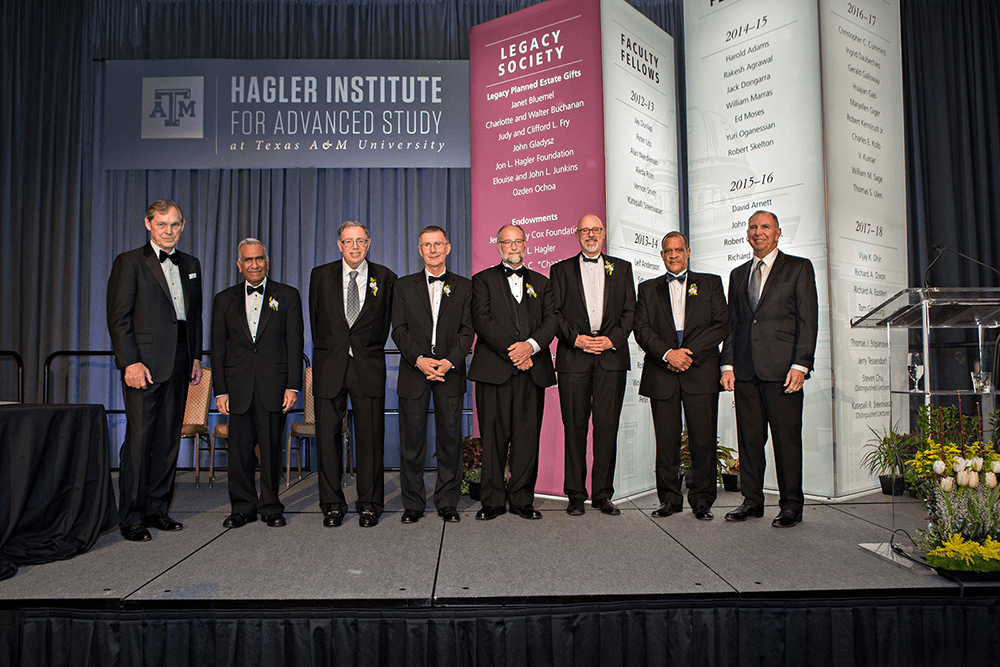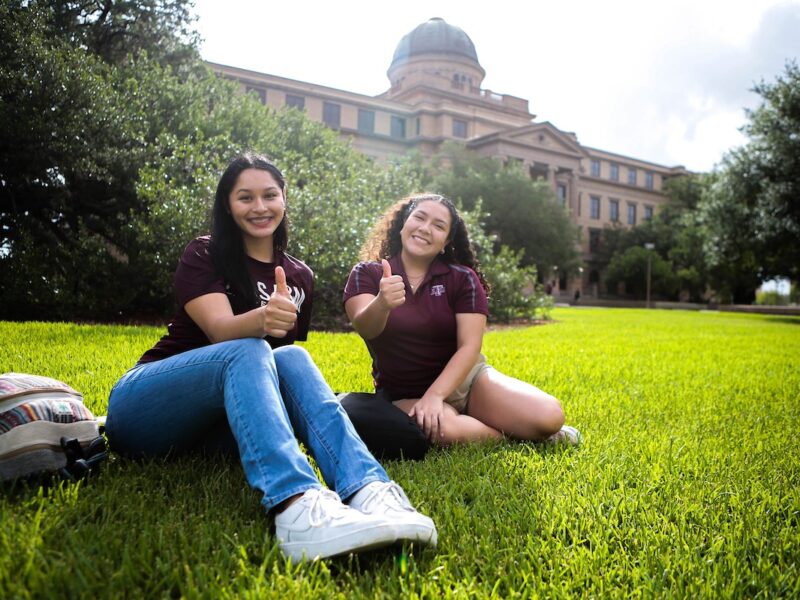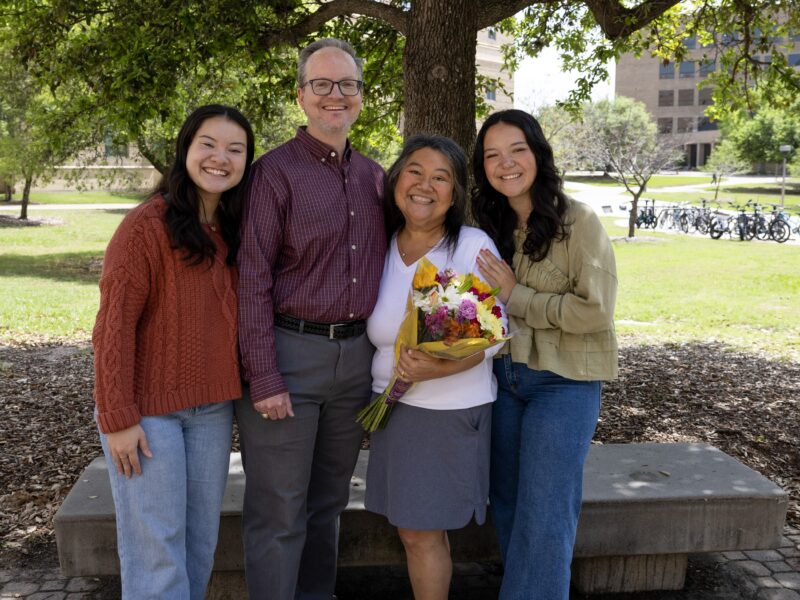
The Hagler Institute for Advanced Study at Texas A&M University inducted its Faculty Fellow Class of 2017-18 during its annual gala on Feb. 23. Each of the new Fellows is renowned nationally or internationally for significantly advancing scholarship in biology, computing, engineering, physics, physiology or law.
In remarks to the audience of 200-plus, Chancellor John Sharp of The Texas A&M University System thanked Founding Director John L. Junkins for guiding the Hagler Institute through its first six years. “I was optimistic,” he said, “but I have to say there was no way that I could envision how quickly this vision would be realized.”
The chancellor also praised the institute’s impact on the university’s academic climate. “Since we have coupled the efforts of the Hagler Institute for Advanced Study with the Chancellor’s Research Initiative, we added significant numbers of academy level professors to our faculty,” Sharp said. “Success breeds success. And with the Hagler Institute now a permanent feature, Texas A&M is set to be even better in the future.”
Texas A&M President Michael K. Young expressed pride in the high quality of this year’s Faculty Fellows and the impact they will have on A&M’s academic climate. “The range of expertise of our guests here tonight is truly astounding,” Young said. “Each of our Fellows contributes to the three pillars we have established at Texas A&M to guide in our pursuit of excellence: Transformational Learning; Discovery and Impact; and Impact on our State, Nation and World.”
The president also praised philanthropist Jon Hagler, Class of 1958, who established a $20 million endowment last year to permanently fund the institute. “Your gift provided an extraordinary boost to this effort,” Young said. “However, you contribute more than just your resources. You contribute your energy and your vision. For all you do, thank you.”
Junkins presented Hagler with a large bronze plaque to commemorate his contributions to the institute. A copy of the plaque will hang at the institute’s entrance. “We will forever try to live up to his personal example of integrity, service and accomplishment,” Junkins said.
The newest class—the sixth in the institute’s history—brings the total number of past and present Faculty Fellows to fifty-two. It includes members of the National Academies of Sciences, Engineering and Medicine and the American Academy of Arts and Sciences as well as fellows of the American Association for the Advancement of Science, the American Institute of Aeronautics and Astronautics, the American Nuclear Society and the American Bar Foundation. Each Faculty Fellow will partner with one or more of the departments offering graduate degrees housed in Texas A&M’s 16 colleges or schools or at Texas A&M’s branch campus in Galveston.
- Vijay K. Dhir, Distinguished Professor of Mechanical and Aerospace Engineering in the Henry Samueli School of Engineering and Applied Science at the University of California, Los Angeles.
- Richard A. Dixon, Distinguished Research Professor and director of the BioDiscovery Institute, Department of Biological Sciences, University of North Texas.
- Richard A. Epstein, the Laurence A. Tisch Professor of Law, New York University School of Law.
- Thomas B. Ginsburg, the Leo Spitz Professor of International Law, and Ludwig and Hilde Wolf Research Scholar, at the University of Chicago Law School, and professor of political science at the University of Chicago.
- James E. Hubbard Jr., Samuel P. Langley Distinguished Professor, A. James Clark School of Engineering, University of Maryland, and director of the Center for Adaptive Aerospace Vehicle Technology and the Morpheus Laboratory, National Institute of Aerospace.
- Thomas J. Stipanowich, professor and holder of the William H. Webster Chair in Dispute Resolution and associate dean of the Straus Institute for Dispute Resolution, Pepperdine University School of Law.
- Jerry Tessendorf, professor of visual computing, School of Computing, Clemson University.
The institute also formally welcomed two new Hagler Institute Distinguished Lecturers:
- Steven Chu, the William R. Kenan Jr. Professor of Humanities and Sciences, and professor of physics and molecular and cellular physiology, at the Stanford University School of Medicine, co-recipient of the 1997 Nobel Prize in Physics and the first scientist to serve as a U.S. Cabinet secretary.
- Katepalli R. Sreenivasan, dean and Eugene Kleiner Professor for Innovation in Mechanical Engineering at the NYU Tandon School of Engineering, and professor of physics, faculty of arts and sciences, and professor of mathematics, Courant Institute of Mathematical Sciences, Polytechnic Institute of New York University.
Annually, the Hagler Institute selects its Faculty Fellows from among top scholars who have distinguished themselves through outstanding professional accomplishments or significant recognition. Previous classes have included two Nobel Prize laureates, a Wolf Prize in Agriculture recipient, a recipient of the Hubble Medal for Literary Scholarship, a recipient of the National Medal of Science, an awardee of the National Medal of Technology and Innovation and a two-time recipient of the State Prize of the Russian Federation.
About the Hagler Institute for Advanced Study: The Hagler Institute for Advanced Study was established in December 2010 by The Texas A&M University System Board of Regents to build on the growing academic reputation of Texas A&M and provide a framework to attract top scholars from throughout the nation and abroad for appointments of up to a year. The selection of Faculty Fellows initiates with faculty nominations of National Academies and Nobel Prize-caliber scholars who align with existing strengths and ambitions of the University. To learn more, visit http://hias.tamu.edu.
About Research at Texas A&M University: As one of the world’s leading research institutions, Texas A&M is at the forefront in making significant contributions to scholarship and discovery, including that of science and technology. Research conducted at Texas A&M represented annual expenditures of more than $905.4 million in fiscal year 2017. Texas A&M ranked in the top 20 of the National Science Foundation’s Higher Education Research and Development survey (2016), based on expenditures of more than $892.7 million in fiscal year 2016. Texas A&M’s research creates new knowledge that provides basic, fundamental and applied contributions resulting, in many cases, in economic benefits to the state, nation and world. To learn more, visit http://research.tamu.edu.
###
Media contact: Rusty Cawley, (979) 458-1475, rcawley@tamu.edu




